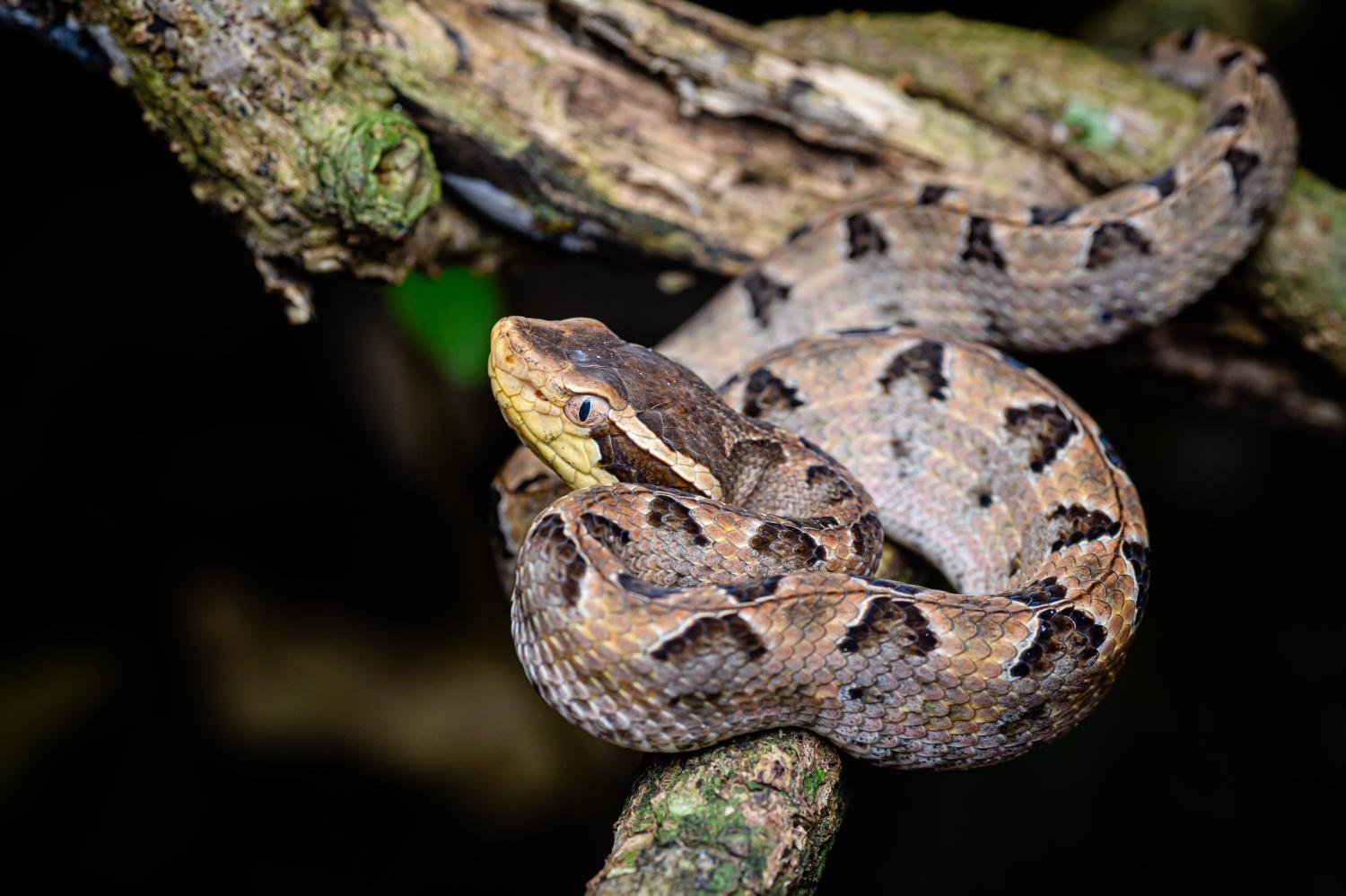
The Malayan Pit Viper is a fascinating reptile that inhabits the tropical rainforests of Southeast Asia. This venomous snake, scientifically known as Calloselasma rhodostoma, is renowned for its unique characteristics and intriguing behavior. With its vibrant colors and distinctive triangular head, the Malayan Pit Viper is both captivating and dangerous. In this article, we will explore 20 captivating facts about this mesmerizing snake, delving into its habitat, physical features, feeding habits, and more. Whether you are a snake enthusiast or simply curious about the wonders of the animal kingdom, get ready to be amazed by the world of the Malayan Pit Viper!
Key Takeaways:
- The Malayan Pit Viper is a stunning snake with deadly venom, unique hunting abilities, and a vital role in its ecosystem. It needs our help to survive in the face of habitat loss and persecution.
- This snake’s captivating features and behaviors, from its camouflage skills to its mysterious mating rituals, make it a fascinating creature worth protecting. Let’s raise awareness and take action to ensure its survival.
Majestic Appearance
The Malayan Pit Viper, scientifically known as Calloselasma rhodostoma, is a species of venomous snake native to Southeast Asia. Known for its striking and vibrant coloration, this species showcases a combination of green, brown, and yellow scales, providing them with an incredibly majestic appearance.
Deadly Venom
The Malayan Pit Viper possesses venom that is potent enough to immobilize their prey in a matter of seconds. Their venom contains a cocktail of toxins, including coagulants and anticoagulants, which can lead to severe internal bleeding and tissue damage.
Pit Vipers with a Purpose
Named after the heat-sensing pits located on both sides of their head, the Malayan Pit Viper uses these specialized organs to detect and locate warm-blooded prey. This remarkable adaptation gives them a distinct advantage when it comes to hunting in low-light conditions or dense vegetation.
Versatile Eaters
Malayan Pit Vipers are extremely adaptable when it comes to their diet. Although they primarily feed on small mammals like rodents and birds, they are known to consume lizards, frogs, and even other snakes when the opportunity presents itself.
Nocturnal Hunters
These pit vipers are primarily active during the night. Their excellent night vision, combined with their heat-sensing pits, allows them to efficiently locate and strike their prey, making them highly successful nocturnal hunters.
Lifesaving Venom
While the venom of the Malayan Pit Viper is highly dangerous to its prey, it has also been found to have medicinal properties. Components of its venom have been used in the development of drugs to treat conditions like hypertension and thrombosis.
Unique Defense Mechanism
Malayan Pit Vipers possess a unique defense mechanism called “rubber banding.” When threatened, they coil their bodies into a tight spiral, causing their scales to rub against each other, producing a distinctive sound similar to a rubber band snapping.
Camouflaged Masters
These snakes are masters of disguise, thanks to their remarkable camouflage abilities. With their coloration blending seamlessly with their surroundings, they can remain hidden from predators and unsuspecting prey alike.
Varied Habitat
The Malayan Pit Vipers can be found in a wide range of habitats, including rainforests, swamps, grasslands, and even agricultural areas. This adaptability allows them to thrive in diverse environments throughout their native range.
Lateral Birth
Unlike most snakes, Malayan Pit Vipers give birth to live young instead of laying eggs. This reproductive strategy, known as viviparity, ensures the survival of their offspring by providing them with internal nourishment and protection until they are ready to venture into the world.
Widespread Distribution
The Malayan Pit Viper has a broad distribution throughout Southeast Asia, including countries like Thailand, Malaysia, Vietnam, and Indonesia. This extensive range showcases their ability to inhabit a variety of climates and habitats.
Poised Predators
These pit vipers are incredibly patient and will often remain motionless for extended periods, waiting for unsuspecting prey to come within striking range. Their lightning-fast strikes are a testament to their predatory prowess.
Mysterious Mating Rituals
The mating rituals of Malayan Pit Vipers still hold many mysteries. While little is known about their courtship behavior, it is believed that scent cues and ritualized combat between males play a role in attracting mates.
Populations Under Threat
As human activities continue to encroach upon their habitats, the Malayan Pit Viper faces various threats, including habitat loss and fragmentation. Additionally, they are often targeted as a result of human fear and superstition, leading to their persecution and illegal trade.
Revered in Local Folklore
The Malayan Pit Viper holds a significant place in the traditional folklore of the regions it inhabits. Often depicted as a revered creature or associated with mythical symbolism, they are deeply ingrained in the cultural fabric of local communities.
Behold the Fangs
The Malayan Pit Viper possesses long, hollow fangs that can fold back when not in use. When striking, these fangs rotate forward, injecting their venom deep into the prey, ensuring a lethal dose.
Diverse Range of Venom Effects
The venom of the Malayan Pit Viper can result in a range of effects depending on the individual’s reaction. These can include intense pain, swelling, necrosis, and even potentially fatal systemic effects if left untreated.
Conservation Efforts
Recognizing the importance of conserving this species, efforts have been made to raise awareness about the Malayan Pit Viper and its ecological role. Conservation initiatives aim to protect their habitats, combat illegal trade, and promote coexistence with local communities.
Fascinating Reproductive Cycle
The reproductive cycle of the Malayan Pit Viper is a remarkable process. After giving birth, females undergo a period known as post-parturition sheds, where they shed their skin multiple times to restore their condition before beginning the mating process again.
Underestimated Intelligence
While they may not possess the same level of intelligence as mammals, Malayan Pit Vipers have demonstrated problem-solving abilities and complex behaviors, challenging the notion that reptiles are solely driven by instinct.
Conclusion
The Malayan Pit Viper is a fascinating reptile that holds many captivating facts. From its potent venom to its unique camouflage, this snake never ceases to amaze. Its prominent role in the ecosystem and its adaptation to various habitats make it a vital species to study and protect. Whether you’re an adventurer, a nature enthusiast, or simply curious about reptiles, learning about the Malayan Pit Viper will uncover a world full of wonder and intrigue. So, embrace the opportunity to explore this mesmerizing creature and delve deeper into the exciting realm of snakes in the animal kingdom.
FAQs
Q: Are Malayan Pit Vipers dangerous?
A: Yes, Malayan Pit Vipers are highly venomous snakes. Their venom can cause severe pain, swelling, and even tissue damage. It is important to exercise caution and avoid any encounters with these snakes.
Q: Where are Malayan Pit Vipers found?
A: Malayan Pit Vipers can be found in various Southeast Asian countries, including Malaysia, Thailand, Indonesia, and Myanmar. They tend to inhabit forests, hillsides, and areas with dense vegetation.
Q: What do Malayan Pit Vipers eat?
A: Malayan Pit Vipers primarily feed on small mammals, birds, and lizards. They are ambush predators, using their venom to immobilize their prey before consuming it.
Q: Can Malayan Pit Vipers be kept as pets?
A: Keeping Malayan Pit Vipers as pets is not recommended. They require specialized care, such as specific temperature and humidity levels, and their venomous nature poses a risk to inexperienced handlers.
Q: How can I identify a Malayan Pit Viper?
A: Malayan Pit Vipers have a distinctive triangular-shaped head and a stout body. They can range in color from green, brown, or gray, with patterns that help them blend into their surroundings.
Was this page helpful?
Our commitment to delivering trustworthy and engaging content is at the heart of what we do. Each fact on our site is contributed by real users like you, bringing a wealth of diverse insights and information. To ensure the highest standards of accuracy and reliability, our dedicated editors meticulously review each submission. This process guarantees that the facts we share are not only fascinating but also credible. Trust in our commitment to quality and authenticity as you explore and learn with us.


